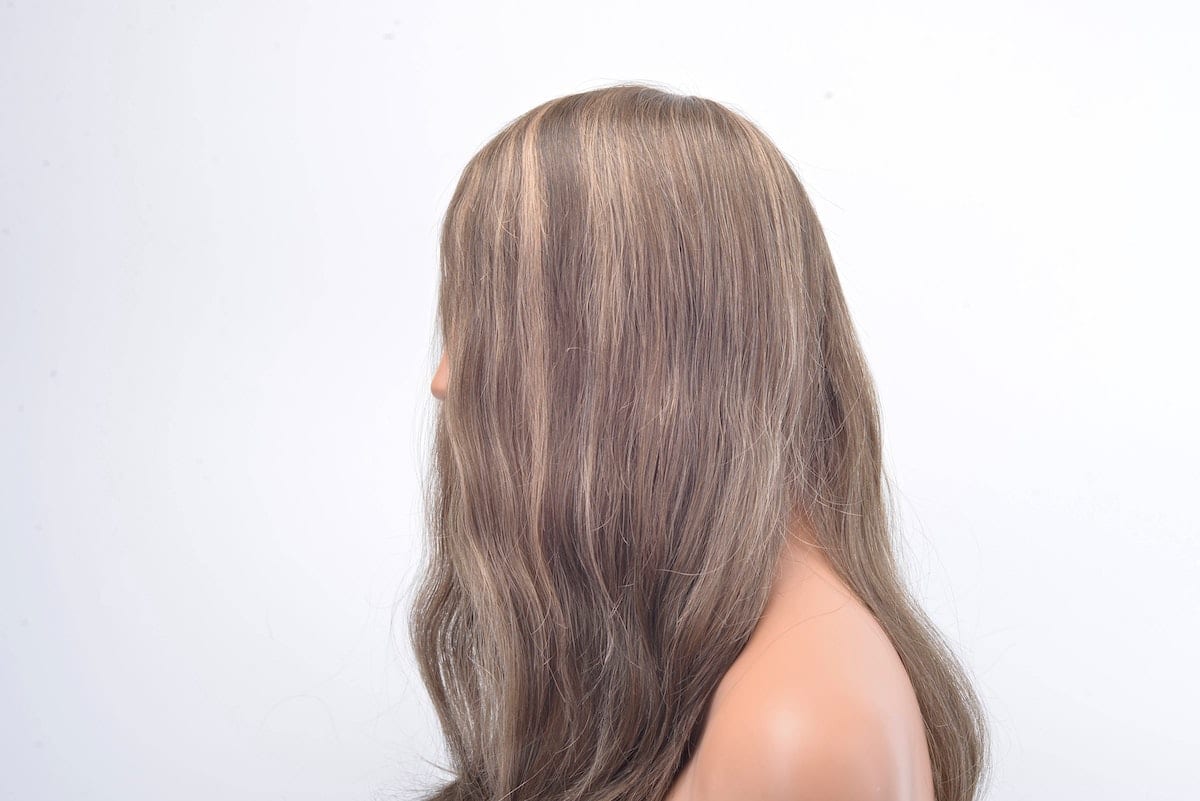When we talk about hair health and beauty, we often focus on things like hair products and styling techniques. However, at the root of radiant hair and a healthy scalp are some discreet but essential players: the sebaceous glands. Located right next to the hair follicles, these small glands play a major role in protecting, moisturising and maintaining the vitality of our hair. What role do the sebaceous glands play in hair health? Find out how to care for your hair at source.
What are sebaceous glands?
Sebaceous glands are small glands located in the dermis of the skin, responsible for the production and secretion of sebum. Sebum is an oily substance made up of lipids. It has several functions, including lubricate skin and hair, to protect against dehydration, and form a barrier against external aggression, like bacteria.
Sebum production and secretion are influenced by various factors, including hormones. For example, during puberty, an increase in androgen hormones can stimulate sebum production, which is often linked to the appearance of acne.
Although sebum plays a protective role, excessive or insufficient production, or even a change in its composition, can cause various skin problems. A excess sebum can lead to oily skin, acne and skin infections. Conversely, a lack of sebum can make skin dry and sensitive.
Where are the sebaceous glands located on the scalp?
The majority of sebaceous glands are associated with the hair follicles which means that they pour their sebum into these follicles, where it is then transported to the surface of the skin. However, they can also be found in hairless areas, such as the eyelids, nose and other parts of the face.
In the scalp, the sebaceous glands are attached to the upper part of the hair follicles, near the hairline. When sebum is produced, it moves along the hair, lubricating and protecting it.
Although sebaceous glands are distributed throughout the scalp, their density can vary from person to person. Some people may have areas of the scalp that produce more sebum than others, which can lead to an 'oily hair' appearance in some areas.
How does sebum influence hair quality?
The Sebum plays a major role in the health and appearance of hair. It naturally coats the hair shaft, helping to retain moisture. This layer of sebum prevents dehydration and keeps hair hydrated and supple. It also forms a protective barrier against external aggressors, such as UV rays, pollution and chemicals.
Sebum lubricates the hair, reducing friction when brushing or styling. This lubrication helps prevent breakage and split ends.
Sebum helps maintain a balanced pH level on the scalp, which is essential for healthy hair follicles and hair growth. However, excessive sebum production can make hair look heavy and greasy. On the contrary, if the sebaceous glands don't produce enough sebum, hair can become dry, brittle and lack its natural shine.
Good to know: an imbalance in the composition of sebum or excessive sebum production can lead to the appearance of this skin condition, which is characterised by itching or redness and dandruff.
What influences sebum production?
The hormones play a major role in regulating sebum production, particularly androgens, which stimulate sebaceous secretion. This is why, during periods of hormonal fluctuations, such as puberty, pregnancy or certain menstrual cycles, we often see an increase in sebum production.
As a result medicines. especially those that affect hormone levels, such as oral contraceptives or steroids, can influence sebum production.
In addition, the humidity, temperature and pollution can influence sebum production. For example, exposure to hot, humid environments can increase sebaceous secretion.
Finally, the excessive use of aggressive shampoos or frequent hair washing can strip the scalp of its natural oils, prompting the sebaceous glands to produce more sebum to compensate. Conversely, insufficient hygiene can lead to a build-up of sebum.
How can I care for an oily scalp?
Having an oily scalp can be a source of frustration, especially when you're trying to maintain healthy, radiant hair. Excess sebum, often due to increased activity of the sebaceous glands, requires special care to manage this delicate balance.
To look after your greasy hair it is preferable to do not use an anti-seborrhoeic shampoo. While they have an immediate effect, repeated use can alter the pH of the scalp, paradoxically leading to increased sebum secretion over the long term. Instead, opt for an ultra-gentle, pH-neutral shampoo designed to gently cleanse while balancing the production of sebum by the sebaceous glands.
La water temperature is an often overlooked factor, but one that plays a crucial role in skin and hair care. Water that is too hot can dehydrate the skin, disrupt its natural lipid barrier and stimulate a excessive production of sebum, leading to dry skin and scalp, but also oily at the surface. What's more, for hair, hot water can open the cuticles, making hair more susceptible to damage and breakage.
Conversely, water that is too cold may not be effective at removing dirt and excess sebum. The ideal is to opt for lukewarm water when washing, ensuring effective cleansing while preserving the integrity of the skin and hair. As a finishing touch, rinsing with cool water can help to tighten hair cuticles, giving them shine and strength.
If, despite all your efforts, your scalp remains excessively oily, it may be a good idea to perform the hair diagnosis of the Centre Clauderer. Thanks to its expertise and personalised approach, the Centre Clauderer offers hair diagnostics, in Paris or remotely, and treatments adapted to each type of scalp. Opting for a diagnosis at the Centre Clauderer is a decisive step towards a healthier scalp and, by extension, healthier, more beautiful hair.

